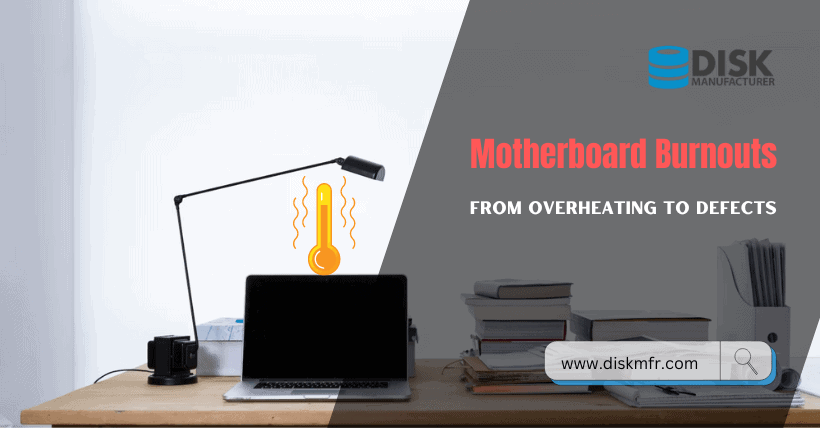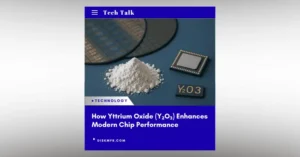Introduction
Welcome to our comprehensive guide on the causes of computer motherboard burnout. As the central component of any computer system, the motherboard plays a crucial role in ensuring smooth operations. However, there are various factors that can lead to its untimely demise.
In this article, we will delve into the intricacies of motherboard failures, exploring the reasons behind these burnouts and equipping you with valuable insights to protect your computer. Whether you’re a tech enthusiast, a computer novice, or a concerned user looking to safeguard your investment, this guide is here to assist you.
We’ll navigate through the realms of overheating, power surges, inadequate power supply, physical damage, manufacturing defects, overclocking, and age-related wear. By understanding the potential pitfalls and implementing preventive measures, you can prolong the life of your motherboard and ensure the longevity and stability of your entire computer system.
So, let’s dive into the fascinating world of computer motherboards and unravel the mysteries behind their burnouts. Join us as we equip you with the knowledge to keep your system running smoothly and guard against the unfortunate fate of a burnt-out motherboard.
Overheating and Dust Accumulation
Overheating and dust accumulation pose significant risks to the health and performance of your computer’s motherboard. As your computer operates, it generates heat, and the motherboard is particularly vulnerable to the consequences of excessive heat buildup.
When a motherboard overheats, its delicate components can become strained and damaged, leading to malfunctions and, in extreme cases, complete burnouts. Factors contributing to overheating can vary from inadequate cooling systems and blocked air vents to aggressive overclocking attempts that push the system beyond its limits.
To mitigate the risk of motherboard burnouts caused by overheating, it’s crucial to implement effective cooling measures. Regularly clean your computer to remove dust and debris that can obstruct airflow and compromise cooling efficiency. Consider using additional cooling solutions such as fans, heat sinks, or liquid cooling systems to maintain optimal operating temperatures.
Moreover, it’s essential to strike a balance when overclocking your system. While overclocking can provide performance boosts, it generates additional heat that can put immense strain on the motherboard. Ensure that you have adequate cooling mechanisms in place and closely monitor temperature levels to prevent overheating-related failures.
By taking proactive steps to manage overheating and dust accumulation, you not only protect your motherboard from potential burnouts but also improve the overall performance and lifespan of your computer system. So, let’s dive into the realm of cooling and maintenance practices to safeguard your motherboard and ensure optimal computing experiences (Extended Reading: Decoding the Complexity: Adding Components to Computers).
Power Surges and Electrical Issues
Power surges and electrical issues can wreak havoc on your computer’s delicate motherboard, causing irreversible damage. These sudden spikes in electrical voltage can occur due to various factors such as lightning strikes, utility grid fluctuations, or faulty electrical wiring.
When a power surge occurs, excessive voltage can overload the motherboard’s circuitry, leading to burnouts and component failures. Protecting your computer from power surges is crucial in safeguarding the longevity of your motherboard.
One effective measure to mitigate the risk of motherboard burnout from power surges is to use surge protectors. These devices are designed to divert excess voltage away from your computer, ensuring that only safe levels of electricity reach your motherboard and other components. Investing in a high-quality surge protector can provide an added layer of defense against unpredictable power surges.
Another recommended solution is the use of uninterruptible power supplies (UPS). These devices not only protect your computer from power surges but also provide battery backup during power outages. By supplying a stable and clean power source, UPS units prevent abrupt shutdowns and potential damage to your motherboard caused by sudden power fluctuations.
Regularly inspecting and maintaining your electrical infrastructure is also crucial. Ensure that your electrical wiring is up to code and properly grounded to minimize the risk of electrical issues. If you suspect any electrical problems, consult a qualified electrician to address them promptly.
By taking proactive steps to protect your computer from power surges and electrical issues, you can significantly reduce the likelihood of motherboard burnouts. Safeguarding your motherboard ensures the stability and reliability of your computer system, allowing you to work and enjoy your digital experiences with peace of mind.
Inadequate Power Supply
Having an inadequate power supply for your computer system can have detrimental effects on the health of your motherboard. When the power supply unit (PSU) is unable to meet the power requirements of your components, it can lead to instability and potential burnout.
Inadequate power supply can result in voltage fluctuations, which can strain the motherboard’s delicate circuitry. Over time, these fluctuations can cause damage to the motherboard’s components, leading to system failures and reduced performance.
To prevent motherboard burnouts caused by an inadequate power supply, it is essential to choose a PSU that matches the power requirements of your computer system. Consult the specifications of your components, including the motherboard, CPU, graphics card, and other peripherals, to determine the appropriate wattage for your PSU.
Investing in a high-quality PSU from reputable manufacturers can provide peace of mind and protect your motherboard from potential power-related issues. Ensure that the PSU is capable of delivering stable power and has sufficient connectors to support all your components.
Regularly monitor the voltage levels and temperatures of your computer system using software tools or hardware monitoring devices. This will help you identify any anomalies or potential issues related to the power supply. If you notice consistent voltage drops or fluctuations, consider replacing the PSU with a more reliable and powerful unit.
Remember, the power supply is the lifeline of your computer system, and an inadequate one can have severe consequences for the health of your motherboard. By investing in a high-quality PSU and ensuring it meets the power demands of your components, you can protect your motherboard from burnouts and ensure the stability and longevity of your entire computer system.
Physical Damage and Mishandling
Physical damage and mishandling can be detrimental to the health and functionality of your computer’s motherboard. Accidents happen, and mishandling your computer components can lead to severe consequences, including motherboard burnout.
One common cause of physical damage is improper installation or removal of hardware components. Applying excessive force, bending or damaging pins, or mishandling delicate connectors can result in irreparable damage to the motherboard. It is crucial to follow proper installation and removal procedures outlined in the manufacturer’s guidelines to avoid unnecessary risks.
Transporting your computer system without adequate protection can also expose the motherboard to potential damage. Vibrations, shocks, or impact during transit can dislodge components, loosen connections, or even crack the motherboard. Whenever you need to transport your computer, ensure it is securely packed and adequately cushioned to minimize the risk of physical damage.
Another factor to consider is the environment in which your computer operates. Exposure to excessive moisture, extreme temperatures, or high levels of dust can all contribute to the deterioration of the motherboard’s components. It is essential to keep your computer in a clean and controlled environment, away from direct sunlight, sources of moisture, or excessive heat.
To protect your motherboard from physical damage, handle computer components with care, paying special attention to connectors and fragile parts. When working inside your computer, use an anti-static wristband or periodically touch a grounded metal surface to discharge any static electricity, as static electricity can cause damage to sensitive electronic components.
By being mindful of physical damage risks and implementing proper handling practices, you can significantly reduce the chances of motherboard burnout. Protecting your motherboard not only ensures the smooth functioning of your computer system but also preserves your investment in valuable hardware components.
Manufacturing Defects
While uncommon, manufacturing defects can contribute to motherboard burnout. These defects may arise during the production process, resulting in compromised functionality or long-term reliability issues.
Manufacturing defects can manifest in various forms, including faulty components, improper soldering, or design flaws. These defects can cause erratic behavior, system instability, or complete failure of the motherboard.
Identifying manufacturing defects can be challenging, as they may not be immediately apparent. However, if you experience frequent crashes, random restarts, or unusual behavior from your computer system, a manufacturing defect could be the underlying cause.
To minimize the risk of motherboard burnout due to manufacturing defects, it is essential to purchase motherboards from reputable manufacturers known for their quality control measures. Research and read reviews to gauge the reliability and customer satisfaction associated with different motherboard brands.
Additionally, registering your motherboard for warranty coverage can provide an extra layer of protection. In the unfortunate event that a manufacturing defect causes a motherboard failure, you may be eligible for a replacement or repair under warranty.
Regularly updating your motherboard’s firmware or BIOS can also help address any known issues or bugs that may arise from manufacturing defects. Check the manufacturer’s website for updates and follow their instructions to ensure your motherboard is running the latest stable version.
While manufacturing defects are relatively rare, being aware of the potential risks and taking precautions can help safeguard your computer system. By choosing reliable manufacturers, registering for warranty coverage, and staying updated with firmware releases, you can minimize the impact of manufacturing defects and maintain the stability and longevity of your motherboard.
Remember, investing in a high-quality motherboard from a trusted manufacturer is a proactive step towards reducing the likelihood of motherboard burnouts and ensuring the smooth operation of your computer system.
Overclocking and Overvolting
Overclocking and overvolting are practices employed by some users to push their computer components beyond their intended limits in search of enhanced performance. While these techniques can yield improvements, they also increase the risk of motherboard burnout.
Overclocking involves running the CPU or other components at higher speeds than their default settings, generating more heat and potentially overwhelming the motherboard’s capabilities. Overvolt, on the other hand, involves supplying higher voltages to components, which can increase power consumption and heat production.
If you choose to overclock or overvolt your system, it is crucial to take precautions. Ensure proper cooling with adequate airflow and monitor the temperatures of your components. Use overclocking utilities or BIOS settings to make gradual adjustments rather than extreme changes. This will help minimize the risk of motherboard burnout.
Age and Wear
Like any other electronic device, computer motherboards are subject to age and wear. Over time, the constant use and exposure to heat can degrade the motherboard’s components, leading to a higher risk of failure. Signs of an aging motherboard include BIOS errors, random crashes, or system instability.
To prolong the lifespan of your motherboard, consider regular upgrades and maintenance. Keep your computer’s components clean and dust-free, replace thermal paste when necessary, and monitor the temperatures regularly. Additionally, staying up-to-date with the latest firmware updates or BIOS releases can help improve stability and address any known issues.
Conclusion
Understanding the reasons behind motherboard burnouts is crucial for maintaining the longevity and performance of your computer system. Overheating, power surges, inadequate power supply, physical damage, manufacturing defects, overclocking, and age-related wear are all potential factors that can lead to motherboard failures.
To protect your motherboard, it is essential to implement preventive measures. Ensure proper cooling with adequate airflow, clean your computer regularly to prevent dust accumulation, use surge protectors or UPS devices to safeguard against power surges, and handle computer components with care during installation and maintenance.
By taking these precautions and staying vigilant, you can reduce the risk of motherboard burnout and prolong the lifespan of your computer system.
FAQs
Q1: How can I prevent my computer motherboard from burning out?
A1: To prevent motherboard burnout, ensure proper cooling, clean your computer regularly, use surge protectors or UPS devices, and handle components with care.
Q2: Can a faulty CPU cause a motherboard to burn out?
A2: A faulty CPU can potentially cause a motherboard to burn out if it generates excessive heat or sends irregular voltage signals.
Q3: Is it possible to repair a burnt-out motherboard?
A3: In most cases, a burnt-out motherboard cannot be repaired. It is usually more cost-effective to replace the motherboard.
Q4: Are all motherboards susceptible to burning out?
A4: While all motherboards are susceptible to a possible potential burnout, following proper maintenance and usage guidelines can significantly reduce the risk.
Q5: Can a motherboard burnout cause data loss?
A5: Yes, a motherboard burnout can potentially lead to data loss if the storage devices or other components connected to the motherboard are affected.

Related:








